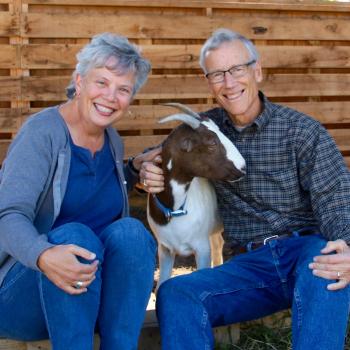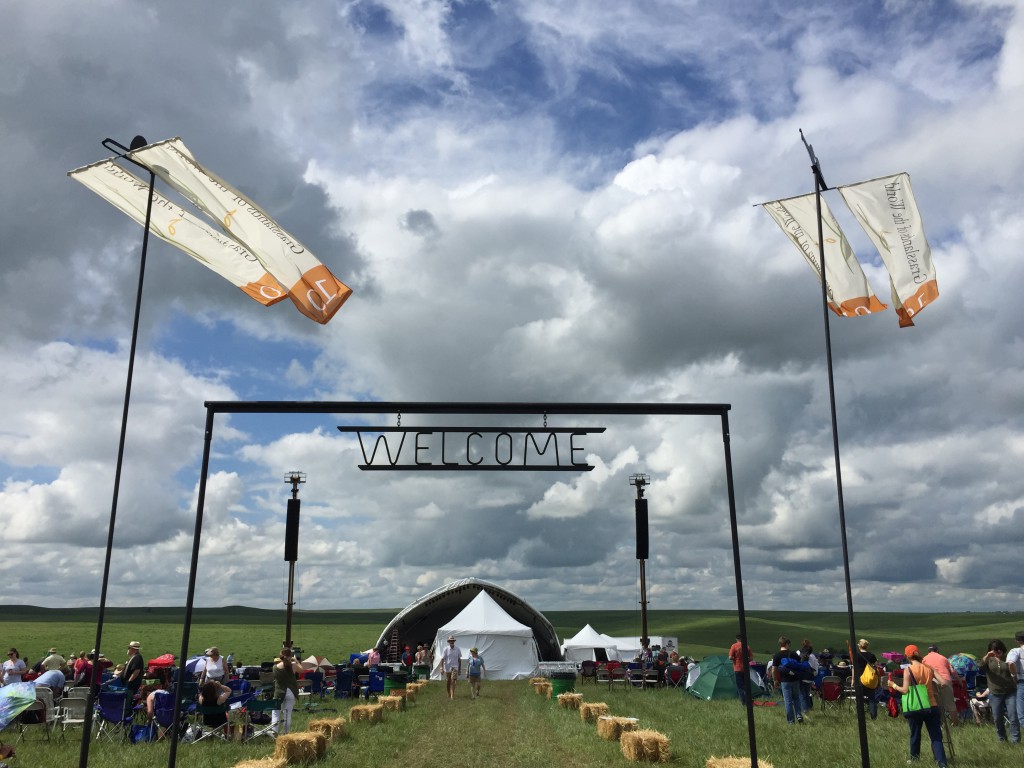
I’ve been doing this blog for a number of years, but there’s one huge category of spirituality that I’ve never written about—the spirituality of music. Well, today is the day to fix that omission.
That’s because I recently had the chance to witness one of the most remarkable musical events in the U.S.: the Symphony in the Flint Hills. This Kansas treasure combines classical music with tallgrass prairie under a wide open Western sky.
The concert has its roots in 1994, when Flint Hills rancher Jane Koger decided to have a party for her birthday. Not being one to think small (and apparently being a gregarious person) she invited 3,000 of her closest friends to a symphony performance on her Homestead Ranch.
Ten years later, memories of that magical evening prompted a group of Flint Hills leaders to begin a similar public event. Their primary goal was to raise awareness of the Flint Hills, the largest expanse of tallgrass prairie in the nation. For many thousands of years bison grazed these hillsides. When the pioneers arrived, they couldn’t plow the region because of its rocky soil, and so the hills were used to feed cattle. Thus the rich biodiversity of the Flint Hills was kept largely intact, aided by periodic fires set by ranchers, who follow the same cycle of burning once done by Native Americans. The fires keep the trees at bay, remove dead vegetation, and stimulate the prairie plants to grow taller and more abundantly.
I’m a huge fan of prairie landscapes, and I think the Flint Hills are nothing short of spectacular—a truly international attraction. Particularly at sunrise and sunset, they are stunningly beautiful, with grasses looking like ocean waves as they sway and bend in the wind.
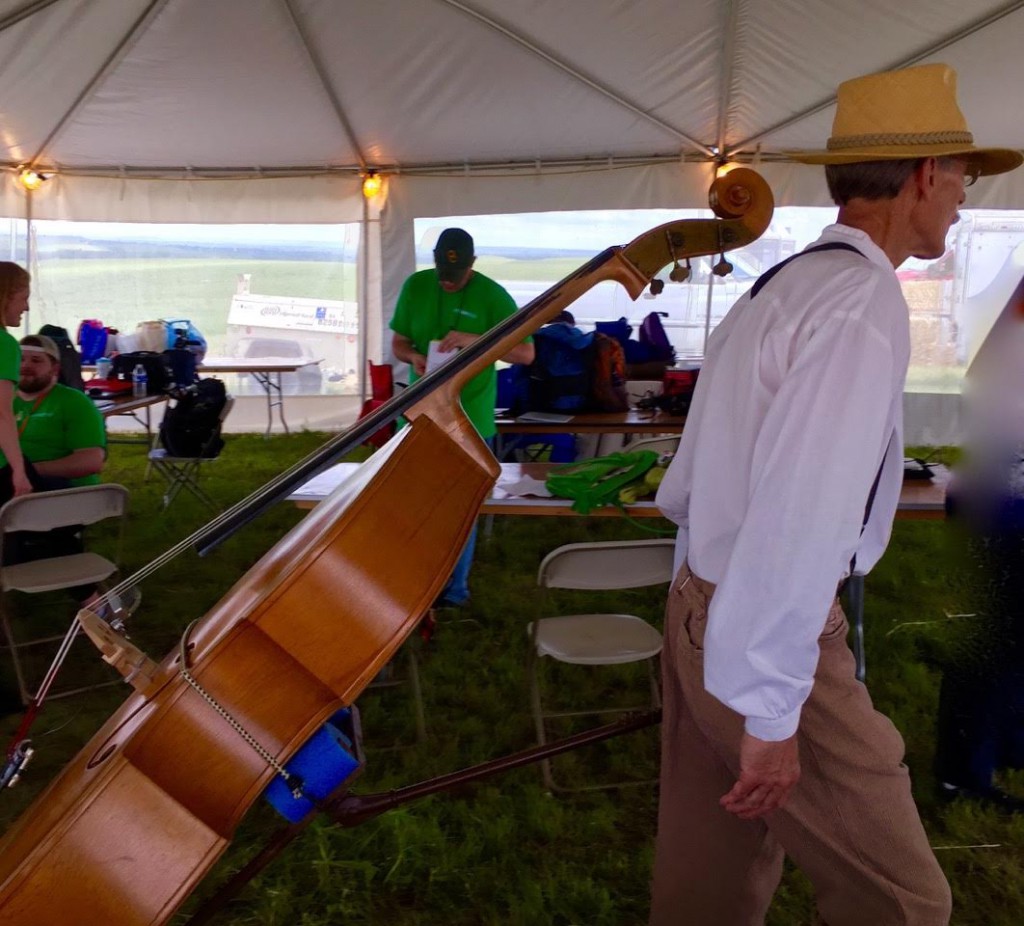
Kudos go to both Flint Hills leaders and to the Kansas City Symphony for making this annual concert possible. The symphony has performed each June since 2004 at a different remote spot in the Flint Hills. Most of the concerts have been on ranches, though this past year the event was held at the Tallgrass Prairie National Preserve near Strong City. A small army of 700 volunteers helps stage the non-profit concerts, which draw 7,000 attendees from around the world.
The symphony’s 80 musicians play under a portable structure that protects them from the sun and wind, but everyone else sits on folding chairs, hay bales, lawn chairs or on the ground. At one point during the concert I looked around and just let the charm of the scene soak in: there were ranchers in cowboy hats, farmers in overalls, elderly women wearing sensible shoes, and young couples holding hands. And all were listening with rapt attention to the music, which was a selection of pieces relating to the world’s grasslands, from Borodin’s In the Steppes of Central Asia to the theme from the film Out of Africa.
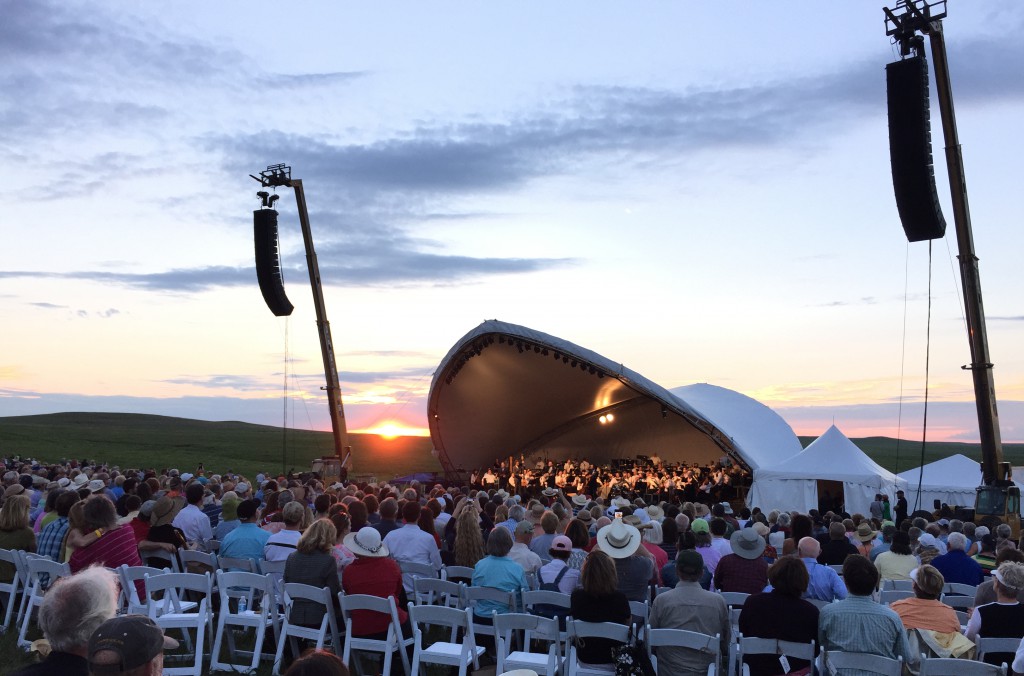
Actually that description is not quite accurate, because some concert goers clearly couldn’t just sit and watch the stage when there was so much other beauty to drink in. Instead they wandered out into the prairie with a faraway look in their eyes, watching as the slowly sinking sun gilded the grasses with halos of light.
And then—and you’re going to think I’m making this up, but I’m not—over the hill behind the symphony came a herd of cows, and behind them were cowboys. The music soared into a crescendo and the cowboys and their cattle circled up the hill and it was just about the most amazing musical experience I’ve ever had. It was all planned in advance, which amuses me no end. Just think—at some point in the past, someone had the idea to run a herd of cattle through a symphony performance and instead of saying, “Now that’s a really stupid idea,” people said, “Wow! Let’s do it!” And they’ve been doing it ever since.
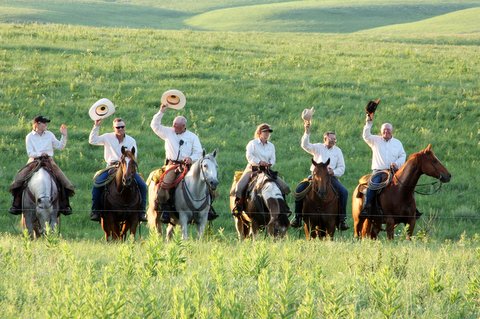
There are other things that make the Symphony in the Flint Hills a wonderful event. Earlier in the day there are art exhibits, educational lectures, wagon rides in old-fashioned prairie schooners, and barbecue meals. But to me the entire experience was worth that single moment when I saw those cattle and cowboys came up over the hill to the accompaniment of the soaring music. If you have an ounce of romance in your veins, I defy you to experience this scene and not tear up at least a little.
So there you have it. There wasn’t a church, mosque, or synagogue within 50 miles. No stained glass, no incense, no clergy, no hymns. But it was one of the most spiritual events I’ve experienced in a long time, a perfect combination of transcendent music and glorious landscape. Most of all, it made me see the tallgrass prairie in an entirely new light—as a venue as sacred as any cathedral. For after all, what church has a carpet of blooming flowers and a ceiling of billowy clouds?
For more information, contact the Symphony in the Flint Hills and Kansas Office of Tourism.



